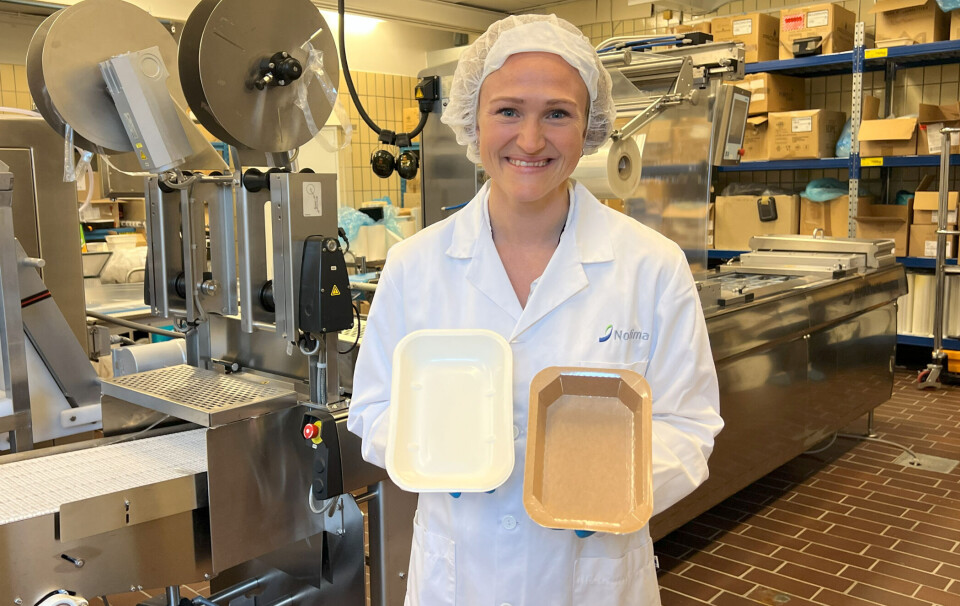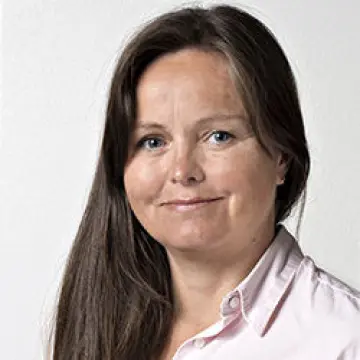THIS CONTENT IS BROUGHT TO YOU BY Nofima The Norwegian Institute of Food, Fisheries and Aquaculture Research - read more
Is it better if food is packaged in plastic or paperboard?
"A more environmental-friendly material is not a more environmental-friendly solution if it leads to reduced food quality and a shorter shelf life," says researcher

Global plastic consumption must be reduced. For food packaging, this can be done either by replacing plastics with alternatives, such as cellulose-based materials, or by using recycled plastics.
Agnete Jordhøy Lindstad at Nofima has written her PhD on the subject. She has looked at how cellulose-based packaging – such as paper and paperboard – can replace plastics in food packaging.
The main challenges are that paper and board cannot withstand moisture and generally possess poor barrier properties. Barrier properties refer to how well a material prevents gases, moisture, light, odours, and fats from passing through the packaging.
Lindstad has investigated whether a barrier coating between the cellulose and food could give the packaging the same qualities as plastic. To find the answer, she tested several types of coatings based on different materials.
Not all barrier coatings are suitable for food contact
“It's not sufficient to develop a material that looks promising in laboratory conditions. We need to understand how the packaging handles contact with relevant foodstuffs and, in particular, how it responds to fat and moisture, such as drip loss from meat,” says Lindstad.
Much of the research in this field has focused on new coatings derived from plant starches, alginate from seaweed, or chitosan from shellfish.
But few have tested how these coatings work in practice, that is, when used for packaging in direct contact with different foods.
But Lindstad has conducted tests on actual food items.

Poor packaging can increase food waste
She has, for example, packaged butter, cream cheese, and mayonnaise in contact with cellulose-based materials with different coatings. These were then refrigerated for up to nine weeks.
The packaging with biodegradable coating performed well with butter, but less so with cream cheese and especially mayonnaise.
In the case of mayonnaise, the packaging actually disintegrated. But coatings made from non-biodegradable plastics held up well, with only small differences across foods.
“It's crucial to consider environmental impact in a broader context. A more environmental-friendly material is not a more environmental-friendly solution if it leads to reduced food quality and a shorter shelf life – as this may increase food waste,” the researcher explains.
Three key challenges: gas, moisture, and fat
Both the cellulose-based packaging and its coating must withstand both moisture and fat, as well as act as a barrier to the gases used when packaging certain foods like meat and fish.
To extend the shelf life of foods, modified atmosphere packaging (MAP) is often used.
The packaging is filled with a gas mixture that slows bacterial growth and keeps the food fresh for longer. For this to work, the packaging must keep the gas from escaping and be securely sealed.
This remains a challenge for cellulose-based materials.

Salmon poses extra challenges
If such materials are to be used for meat and fish, they must also withstand moisture and fat, which can otherwise weaken the protection.
Lindstad has tested cellulose-based trays with various types of plastic coatings for packaging chicken, beef, and salmon using MAP.
Salmon is particularly challenging because it's both fatty and moist. This makes it an interesting test case for this type of packaging.
“In one experiment, we used a recyclable plastic coating, which performed well in maintaining food quality overall. Though especially with salmon, the trays lost some of their shape and strength," she says.
Some gases leak through
In other experiments, the researchers used biodegradable coatings.
"We succeeded in developing a cellulose-based tray with a biodegradable coating that worked for MAP and maintained the seal for the entire storage period – a result which has proven difficult to achieve to date,” she explains.
She also emphasises that the barrier against carbon dioxide (CO2) is not good enough. This shortens the shelf life. This is important, because meat and fish are typically packaged using CO2 to extend their shelf life.
Even though the packaging had a solid barrier against oxygen (O2) and was securely sealed, CO2 still leaked out. While oxygen permeability is often measured, it's equally important to test how well the packaging retains CO2.
Previously, experts believed that the balance between CO2 and O2 permeability was relatively stable across packaging materials.
The road to less plastic use
Lindstad will continue as a researcher at Nofima after her PhD and will keep working on reducing the use of plastics without compromising food quality and shelf life.
Her research will further examine how cellulose-based materials with bio-based and biodegradable coatings can be used to package moist and fatty foods such as meat, fish, and cheese.
An important goal is to find materials that can prevent CO2 from leaking out, so they work as well as possible for foods that require modified atmosphere packaging.
“Our aim is to develop packaging that protects both the food and the environment. Collaboration with industry partners and continuous practical testing are essential to succeed with these solutions,” she says.
References:
Lindstad et al. Material Properties of Paperboard With Biodegradable and Nonbiodegradable Coatings Affected by Storage Conditions and Contact With Selected Food Products, Packaging Technology and Science, vol. 38, 2025. DOI: 10.1002/pts.2891
Vinitskaia et al. Environmental Sustainability, Food Quality and Convertibility of Bio-Based Barrier Coatings for Fibre-Based Food Packaging: A Semisystematic Review, Packaging Technology and Science, vol. 38, 2025. DOI: 10.1002/pts.2868

This content is paid for and presented by Nofima The Norwegian Institute of Food, Fisheries and Aquaculture Research
This content is created by Nofima's communication staff, who use this platform to communicate science and share results from research with the public. Nofima is one of more than 80 owners of ScienceNorway.no. Read more here.
More content from Nofima:
-
Red algae grown in wastewater from fish-farming facilities could become sustainable salmon feed
-
Pumpkins are good for more than just Halloween decorations
-
This is how temperature affects a salmon's health and growth
-
Study: Omega-3 and zinc is a powerful duo for salmon
-
Fish may turn yellow if frozen too fresh
-
Researchers make healthy salmon feed from polluting CO₂





































